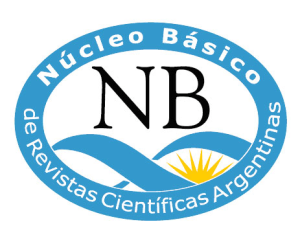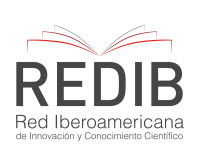Rio Negro and its financial-budgetary structure during the first decades of its creation as a Province
Keywords:
Public spending, Financial-budgetary structure, Río Negro, 1957-1975 periodAbstract
The creation of the Province of Río Negro in 1955 initiated a process of construction and organization of the public sector and its financial-budgetary structure, where the public budget, from a modern conception, is a legal, administrative-financial and economic policy instrument that embodies a government plan. Within this framework, the aim of this paper is to find out how the financial-budgetary structure of Río Negro was configured and to describe the composition of public expenditure between 1957 and 1975, the years in which the institutional framework and the gestation and execution of development programmes took shape. The research methodology is qualitative, the data collection technique is documentary observation and the primary sources of information are laws, decrees and provincial and national resolutions passed between 1955 and 1975. The analysis of historical information shows that until the end of the 1960s, the Provincial State prioritised the allocation of public spending on institution building and economic development, while from 1968 to 1975 it focused mainly on the social dimension. On the other hand, the normative instruments that grouped expenditures according to different criteria were, in part, a consequence of the needs inherent to the performance of functions by the provincial state. During the first years of its creation, there was an administrative-institutional classification of public spending that made it possible to identify responsibilities. Since 1960 and within the framework of the implementation of provincial development policies, a distinction was made between ordinary expenditures and those destined for investment. At the end of that decade and with the inclusion of the classification of public expenditure by purpose, the analysis made it possible to identify the priority of public expenditure allocated to services provided by the state to the community.
Downloads
References
Alé, Miguel Angel. Manual de Contabilidad Gubernamental. Buenos Aires. Ediciones Macchi: 1998.
Bara, Ricardo. Finanzas Públicas y Decisiones Públicas: Un enfoque de Economía Política. Buenos Aires. Fondo Editorial Consejo Profesional de Ciencias Económicas de la Ciudad Autónoma de Buenos Aires: 2006.
Bandieri, Susana. Historia de la Patagonia. Editorial Sudamericana:2005
Bolivar, Miguel Angel. Manual de Finanzas Públicas. Buenos Aires: Ediciones de la Universidad Católica Argentina, 2001
Franco, Mario. Mensaje del Señor Gobernador. Legislatura de la Provincia de Río Negro: 1975.
Jarach, Dino. Finanzas Públicas y Derecho Tributario. Buenos Aires: Abeledo-Perrot, 1985.
Herrera, Soledad Inés. “Río Negro: Análisis cuantitativo de la evolución del tamaño del sector público y de los servicios brindados. Años 1993-2013”. Revista Pirquen. Sección Ciencias Sociales. Vol. 19. Nro. 2, 2016: 14-24.
Herrera, Soledad Inés. “Los recursos públicos de la Provincia de Río Negro durante su conformación institucional y proceso de desarrollo, 1957-1976”. Cuadernos de Investigación Serie Económica 10, 2021: 53 -74.
Manzanal, Mabel. “Lo aparente y lo real en la estrategia de desarrollo económico en la Provincia de Río Negro: 1958-1964.” Revista Interamericana de Planificación Vol. XIV. Nro. 53, 1980: 97-140.
Marradi, Alberto; Archenti, Nélida y Piovani, Juan Ignacio. Manual de Metodología de las Ciencias Sociales. Buenos Aires: Siglo XXI, 2018.
Musgrave, Richard y Musgrave, Peggy. Hacienda Pública. Teórica y aplicada. Madrid: Mc Graw Hill, 1992.
Navarro, Pedro y Nicoletti, Andrea María. Río Negro mil voces en una historia. Neuquén. Ed. Manuscritos libros: 2001.
Núñez, Paula y López, Silvana. “Mapas en escenarios de cambio: el caso de la provincia de Río Negro”. Cuadernos Geográficos Vol. 54. Nro. 2, 2015: 38-66.
Núñez, Paula y López, Silvana. “Desigualdades regionales en planificaciones desarrollistas. Una revisión del proceso de territorialización de Río Negro 1958–1976”. Revista de Geografía Norte Grande 63, 2016: 121-144.
Núñez, Paula Gabriela. Sombras del desarrollo: el armado de la provincia de Río Negro desde sus márgenes. Bariloche. IIDyPCa - Instituto de Investigaciones en Diversidad Cultural y Procesos de Cambio: 2016.
Oszlak, Oscar. “Burocracia Estatal: Política y políticas públicas”. Postdata Revista de Reflexión y Análisis Político Vol. XI, 2006: 11-56. En https://bit.ly/4dm81cf
Oszlak, Oscar. “Estado y Sociedad: ¿nuevas reglas del juego?” Reforma y Democracia, ClAD, 9, 1997: 1- 41. En https://bit.ly/4cuZ5Qu
Ruffini, Martha. “Política y ciudadanía en los comienzos de una nueva provincia. Río Negro 1958- 1962.” XIV Jornadas Interescuelas/Departamentos de Historia. Departamento de Historia de la Facultad de Filosofía y Letras. 2-5 de octubre 2013. Universidad Nacional de Cuyo, Mendoza.
Secretaría de Hacienda de la Nación. Manual de Clasificaciones presupuestarias para el Sector Público Nacional. Ministerio de Hacienda y Finanzas: 2016.
Tagliani, Pablo. Economía del desarrollo regional. Provincia de Rio Negro 1880-2010. Ed. La Colmena: 2015.
Vapnarsky, César. Pueblos del norte de la Patagonia. 1779-1957. CEUR: 1983.
Vapnarsky, César y Pantelides, Edith. La formación de un área metropolitana en la Patagonia. CEUR: 1987.
Downloads
Published
How to Cite
Issue
Section
License
Copyright (c) 2024 Revista Pilquen. Sección Ciencias Sociales

This work is licensed under a Creative Commons Attribution-NonCommercial-ShareAlike 4.0 International License.
Nota del Copyright
Los trabajos presentados en Revista Pilquen, Sección Ciencias Sociales deben ser originales e inéditos y no estar postulados simultáneamente en otras revistas. El envío de todo tipo de colaboración implica la aceptación de las normas editoriales de la revista y la autorización al Comité Editorial para que difunda los trabajos tanto en la revista como en las bases de datos o sistemas de indización en donde se alojan los contenidos de Pilquen.
Las y los autores que publican en esta revista están de acuerdo con los siguientes términos:
1) Las autoras y los autores conservan los derechos de autor y garantizan a la revista el derecho de ser la primera publicación del trabajo al igual que licenciado bajo una Creative Commons "Atribución -No Comercial CC BY-NC-SA”, mediante la cual ser permite copiar, reproducir, distribuir, comunicar públicamente la obra y generar obras derivadas, siempre y cuando se cite y reconozca al autor original. No se permite, sin embargo, utilizar la obra ni sus posibles obras derivadas con fines comerciales.
2) Las y los autores pueden establecer por separado acuerdos adicionales para la distribución no exclusiva de la versión de la obra publicada en la revista (por ejemplo, situarlo en un repositorio institucional o publicarlo en un libro), con un reconocimiento de su publicación inicial en esta revista.
3) Las y los autores no recibirán compensación monetaria de Pilquen por el uso del material contenido en el artículo; así como tampoco asumirán ningún costo de publicación de los mismos.












